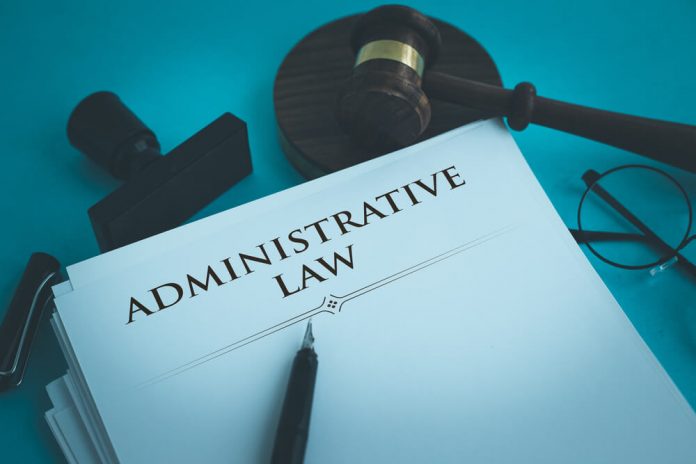This article is written by Preeti Pallavi Jena, from the School of Law, KIIT University, Odisha. This article discusses the administration of India, its conditions, powers, and duties.
Table of Contents
Introduction
Each and every country makes certain rules and regulations for their country to function smoothly and to instill discipline among the citizens. This maintains and allows the authorities to take strict action if any crime or offense is committed. These rules are made by the judiciary and the administrative actions are controlled by the various writs mentioned under the Constitution. Those writs are Habeas corpus, Mandamus, Certiorari, Prohibition and Quo warranto. This administrative law makes the government work perfectly in the centre and state also.
This ensures public benefits as well. This is required for the implementation of rules and for making a good administration.
History
- Ancient India saw the creation of administrative law by the Maurya and Gupta dynasties. Further, the Mughals too followed this path to formulate similar strata of law and followed it thereafter.
- Previously while the king ruled the country, they were always concerned with the maintenance of the formulated law, protecting the state, and keeping it safe from external aggression and collection of taxes.
- After the arrival of the Britishers in India, our administrative law evolved because of the modern aspects. The power of government increased with the establishment of the East India Company. The British made many Acts and statutes which facilitated the development in the sectors of healthcare, transport facilities, for the safety of the public, etc.
- The State Carriage Act 1861 provided the process of giving licenses. During World War II, the powers of the executives grew and the government went on to create various orders. The need for rule of law and judicial reviews of State also increased. Hence, our administrative law is quite flexible in nature.
- The Administrative Procedure Act of 1946 was created to assure the agencies doing well with their work and the public’s participation while a rule is to be implemented.
Powers of administrative law
Administrative law has the power to regulate society. Administrative law puts limits and keeps control in the country regarding the actions that are made. This makes people bound by certain rules and regulations so that they can maintain and follow the strict mechanism for their own benefit itself.
Nowadays, administrative law has greatly developed and it regulates the legislation and government and does not allow the misusing of power provided to them. Though these laws are not codified and proper in nature, many have tried to define them, for instance, Holland, Austin, Ivor Jennings, etc. Acts like the National Labor Relations Board (NLRB) gives a right to the employees to form Unions. This board was created by the Act known as National Labor Relations Act 1935. This law is necessary and crucial for political, social, and constitutional developments. Administrative law is also known as the regulatory law because it regulates the laws.
Scope and purpose
Administrative laws are not codified, but they are based on the Constitution of India. It is a law which is made by the judges, it is hugely growing and expanding in the developing societies. It is based on both the individual and also public rights. Administrative law says about the powers and duties of the authorities. It provides natural justice and gives the public the ability to participate in the rulemaking process.
Difference between constitutional law and administrative law
- The Constitution is the ‘supreme law of the land’ and no law can be above it. It is the basic and most unique law. Whereas administrative law is specific in nature and deals with the administrative part only.
- Constitutional law deals with the general principles, powers of organs, etc whereas administrative law deals with the power and functions of the administration.
- The Constitution is very vast whereas administrative law is quite specific and prescribed.
- Administrative law is very unsystematic but the Constitution is a written law and is very systematic in nature.
Administrative law in India
Administrative law regulates administrative actions by controlling administrative actions to judicial review.
Delegated legislation
Making law is the main function of the legislation. It means subordinate legislation by which powers are given to make laws to implement and deal with the primary legislation.
Delegated legislation provides 3 controlling abuse powers:
-
Parliamentary control
The parliament has control over the delegated legislation that is being delegated as it the law making body.
-
Procedural control
It is defined under the parent Act which is followed by the administrative law in case of making rules. Before the rules are implemented, let the public know about that, so that they can know if it will be beneficial for them or not. If it hampers their rights then they make representations.
-
Judicial control
For the determination of the legal validity of rules, the following aspects are looked at by the judiciary:
- If the legislation is vague.
- If it is ultra vires to the Patent Act.
- If it is unreasonable and discriminatory.
- If the administrative legislation is mala fide.
Judicial Review
The judicial review makes the administrative agencies discipline when they exercise their powers.
Here, the court has the power to review the actions of the government. The judicial review had been brought about in the case of Marbury v. Madison and this case originated in England and India inherited this concept of judicial review from England. Judicial review is of 3 aspects in India. They are as follows:
- Legislative action
- Administrative action
- Judicial action
Here the legislation is more concerned regarding the administrative action.
Constitutional remedies
There are 5 writs that are available for the judicial review of the administrative actions. These writs are under Article 32 and Article 226. These writs were borrowed from Britain. These implementations of writs made many developments. These writs safeguard the fundamental rights and also help in preventing the arbitrariness from threatening the very foundation of the Indian Constitution.
-
Habeas corpus
It means ‘if you may have the body.’ If a person has been detained for the commission of some sort of crime, he should be brought in front of the court with the detaining person being required to justify the reason behind such detention and the court then looking into the matter and deciding whether he committed the crime and whether the detention is lawful or unlawful. The constitutional law in the US puts forth that Habeas corpus writ has a privilege that it shall not be suspended, except in the cases of rebellion. Here, the person needs to be produced in the court at the time and place that has been mentioned or given.
This writ is applied so that justice can be given to a person and he can be saved from imprisonment if he can be proved to be innocent and falsely arrested, either due to misunderstanding or any other cause. Here, the person who is arrested can ask to give a proper reason regarding his detention. Habeas corpus is treated as a remedy for judicial review. But if he has actually committed the crime and there is evidence on it, then he shouldn’t be left at any cost and should be punished by the law and order which the court gives. Conditions that are required are, at the time of filing, the petitioner should be in custody, no other remedy can be applicable here and the problems or issues which have arisen are not yet resolved.
-
Mandamus
It is the same as that of a command or order. It is issued by the court to an authority for performing a public duty imposed by law. This is the courts’ order to the public authority for performing their duty correctly which are official duties. It means ‘we command’. Here a higher court gives an order to the lower court to perform their act which is their duty and which they have failed to perform on their part. This type of writ will not be claimed as a right. This mandamus is issued for guiding the government or person to perform their part of duty truly.
-
Prohibition
It means ‘to stop’ and it is mostly known as ‘stay order’. This is issued by a higher court for curbing the functioning of the lower courts and also to the tribunals, officers who are exercising judicial powers and affecting the rights of the citizens for restricting them from proceeding with the case which will not fall under such jurisdiction. This is issued against a judicial authority. Here, a lower court cannot act beyond the jurisdiction. This writ was addressed to a subordinate court for commanding. Writ of prohibition is hence not applicable to the judicial and quasi-judicial powers. The high court like the supreme court can only apply this writ if there is a hampering of fundamental rights. Prohibition can be applied in the presence and also in absence of the jurisdiction.
-
Certiorari
It means to be certified. Here, for proper consideration, the Supreme Court transfers the matter to any such authority who will be capable of doing it in a better way. But generally, certiorari requests are rejected. We can say that prohibition is allowed earlier and certiorari is available only after the order has been passed. This writ is applied to judicial and quasi-judicial bodies on the following grounds:
- When there is a need for jurisdiction, the writ to a body for performing the judicial and quasi-judicial functions for removing the errors of the jurisdiction.
- For making law perfect on the record by correcting the mistakes or errors.
-
Quo warranto
It is a legal action that can solve the problem that has arrived over the specific person who has the legal right to hold the public office. This is used to control the executive actions under certain statutory provisions. This writ implies what is your power. The writ procedures not just give control for making arrangements to public office against law.
Administrative action
This action is neither legislative nor judicial in nature. It is about concern regarding a particular situation. It sets no obligations for collecting evidence. When the administrative authority is exercising its power, it cannot ignore natural justice completely. Administration action needs to be impartial; in nature. The administrative law may be statutory because the constitution provides certain forces.
A.K. Kraipak v. Union of India
In this case, the court was of the view that to decide the activity of whether the action caused is quasi-judicial or administrative, one needs to see to who have the powers been given, and what are the consequences.
Concept of Ombudsman
It originated to check on the administrative action. This is a part of the administrative system. This concept of ombudsman has the responsibility to take care of the interests and needs of the citizens. The office of the ombudsman was created by Sweden. It had full power in dealing with judicial, executive, and administrative activities. It also has the responsibility regarding civil affairs, both at the state and central level. It receives complaints from citizens, mental health hospitals, etc. This concept has been adopted by many countries like New Zealand, Spain, UK, Australia, the US, Canada, etc. Britain also has this concept which takes the complaints against the government from the public. This has been operated at both state and central levels. He can make the government pay the amount of loss or damage that has been caused to the complainant.
Conclusion
Administrative law has access to the citizens. It tries to solve the problem and tries to take care of the welfare of the people. Through judicial reviews, the court has control and checks the administrative law which is performed. If this law is ultra vires, then the court can provide remedies for such situations. Administrative law tries to maintain the powers, duties, and responsibilities of the administrative bodies. There are disputes which arise between the individuals and authority, and they are solved by the rules and regulations articulated under the broad umbrella of the administrative law. Since, this law has a unique nature, hence it is a procedural branch function. These agencies also help in forming the procedural rules.
References
- http://www.legalserviceindia.com/legal/article-1716-relationship-between-constitutional-law-and-administrative-law-an-analysis.html
- http://lawtimesjournal.in/development-and-evolution-of-administrative-law-in-india-us-uk-and-france/#:~:text=In%201933%20a%20special%20committee,judicial %2 0co n trol%20over%20administrative%20actions.
- http://lawtimesjournal.in/the-meaning-scope-definition-and-significance-of-administrative-law/
- https://blog.ipleaders.in/various-sources-of-administrative-law/
- https://study.com/academy/lesson/administrative-law-objectives-functions-roles.html
- https://www.britannica.com/topic/administrative-law/The-ombudsman
- https://www.vakilno1.com/supreme-court-of-india/administrative-law-judicial-review-and-the-judiciary.html
- http://www.legalservicesindia.com/article/1581/Judicial-Review-of-Administrative-Actions-in-India.html
LawSikho has created a telegram group for exchanging legal knowledge, referrals and various opportunities. You can click on this link and join:













